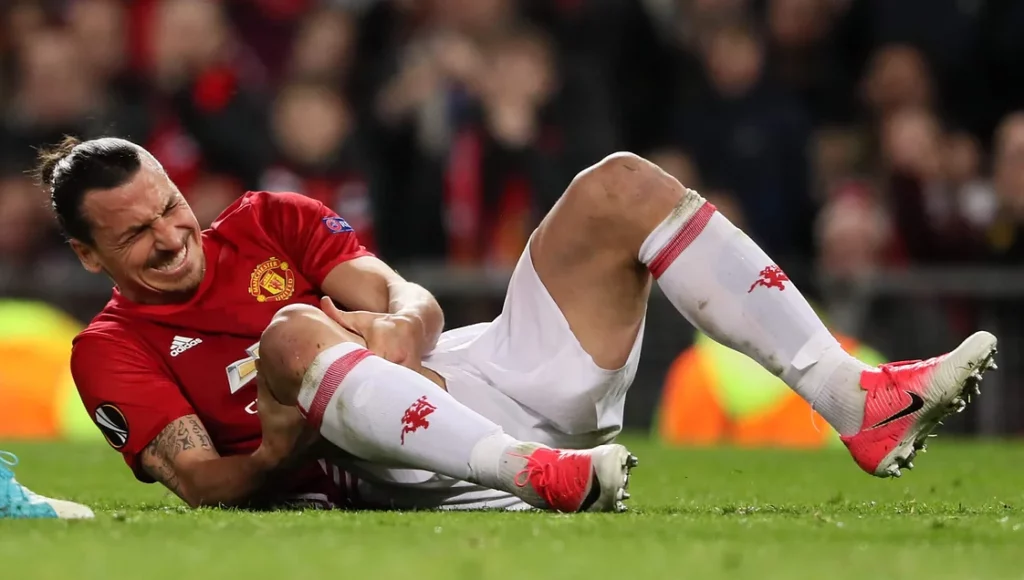Can athletes still perform at an elite level without an ACL? The answer may surprise you. While surgical reconstruction is often the go-to solution for athletes aiming to return to high-demand sports, a deep dive through the newest research suggests that conservative (non-surgical) management can be just as effective. In fact, many elite athletes have proven that a successful career is possible without undergoing ACL reconstruction. In this article, we’ll explore the ACL’s function, common injury causes, and the range of recovery options, including stories of athletes who reached the top of their game without an ACL.
Understanding the ACL: Function and Role
The ACL (anterior cruciate ligament) is one of the four main ligaments in the knee and plays a key role in stability. It connects the thigh bone (femur) to the shin bone (tibia) and restricts forward movement and excess rotation, making it crucial in sports with frequent cutting, pivoting, or quick directional changes.
Key Functions of the ACL:
- Controls forward movement of the tibia.
- Stabilizes the knee during rapid directional changes or deceleration.
- Prevents excessive rotation in pivoting activities.
Who Tears Their ACL and How?
ACL tears often happen in high-demand sports, such as soccer, basketball, skiing, and football. Female athletes are at higher risk due to anatomical and biomechanical differences, as well as hormonal influences.
Common Injury Mechanisms:
- Quick Changes in Direction: Pivoting with the foot planted can strain the ACL.
- Sudden Stops: Abrupt decelerations, common in basketball or soccer, increase ACL stress.
- Improper Landings: Awkward knee angles during jumps can cause the knee to collapse inward.
- Direct Impact: Forceful hits, such as a tackle, can tear the ACL.
Rehabilitation Options: Conservative Management vs. ACL Surgery
While ACL reconstruction is common for athletes wanting to fully restore knee stability, conservative management is a valid alternative. Emerging research now compares outcomes like knee pain, function, range of motion, joint stability, return-to-sport time, and osteoarthritis (OA) rates between surgical and non-surgical ACL patients.
What Did the Research Find?
The studies show no significant difference between surgical and non-surgical groups in terms of knee pain, function, range of motion, jumping ability, or ability to return to sport. The non-surgical group did experience increased joint laxity (movement), but this did not impair knee function. Surprisingly, studies found that non-surgical patients did not have higher rates of osteoarthritis or additional knee damage. In fact, one study found that surgical patients had a higher risk of OA long term.
For some athletes, conservative treatment led to faster recovery times, fewer complications, and less re-tears (obviously) than the surgical route. However, knee laxity can be a barrier, as many participants in these studies scored lower on confidence questionnaires pertaining to their knee abilities comparatively to their surgical counterparts.
Conservative Management: A Realistic Option for Some Athletes
Non-surgical rehab programs emphasize strengthening the muscles around the knee, including the quadriceps, glutes, and hamstrings, to compensate for the ACL’s role in stability. With the right approach, history has shown us that some athletes can continue performing at high levels, even without an intact ACL.
Athletes Who Excelled Without an ACL:
Mickey Mantle: Baseball legend Mickey Mantle tore his ACL during a World Series game in his rookie season in 1951. Due to the time frame, ACL surgery was not commonplace, so he was forced to rehabilitate the knee conservatively. The man nicknamed: “The fastest player to first base” managed to carve out a legendary Hall of Fame career spanning 18 seasons, all without his right ACL.
John Elway: Legendary NFL quarterback John Elway tore his ACL back in high school. He went the non-surgical route and carved out a Hall of Fame career winning two Super Bowls. Equally impressive, he missed a total of 9 games due to injury during his 15 year career.
Jimmy Hitchcock: NFL cornerback Jimmy Hitchcock played his entire career without an ACL in either leg. He opted out of surgery after tearing both ACLs in high school. The respected defender went on to play 8 NFL seasons, leading the league in interceptions in 1998.
DeJuan Blair: The 6ft 7in power forward tore both of his ACL’s during his high school basketball days. He had surgery to try and repair the ligaments however they didn’t take and later investigation confirmed he was without either ACL. The former Spur went on to play a 450 game NBA career without an ACL in either leg.
Hines Ward: Two-time Super Bowl champion Hines Ward played 217 NFL games as a wide receiver without an ACL in his left knee. Fun fact, Hines found out he had a torn ACL during his NFL combine when they tested his knee laxity. Despite advice to get it repaired, the future Superbowl MVP decided to continue his career status quo. Evenly impressive, he completed an Ironman triathlon post-retirement.
Joe Namath:“Broadway Joe” Namath tore his ACL during his college years at the University of Alabama. Despite opting for a non-surgical, conservative approach, Namath led his team to a national championship and secured his spot as a promising NFL prospect. During his NFL career Namath opted for surgery but his college accolades were achieved sans ACL.

